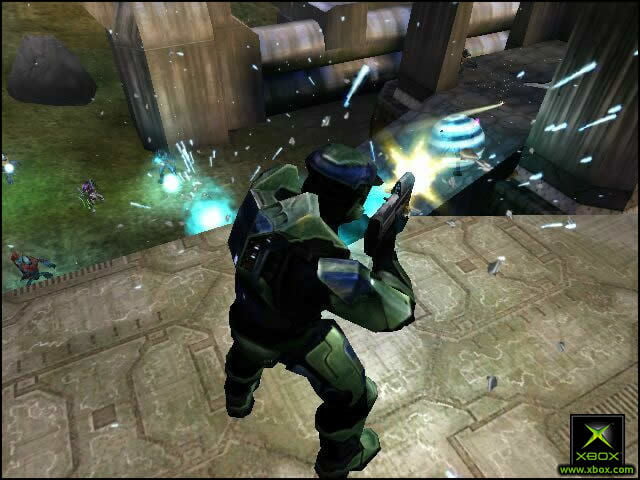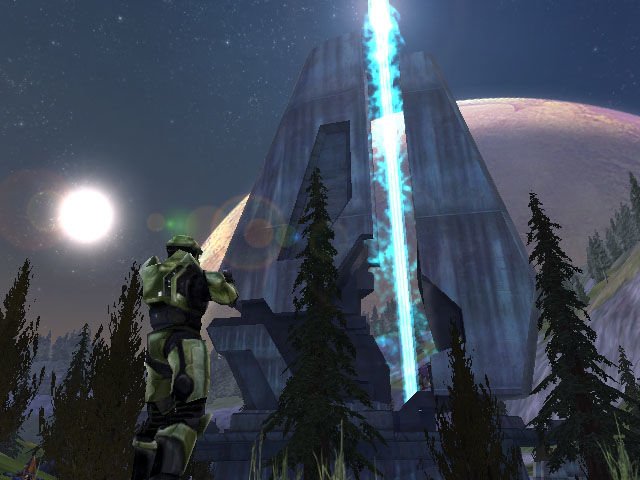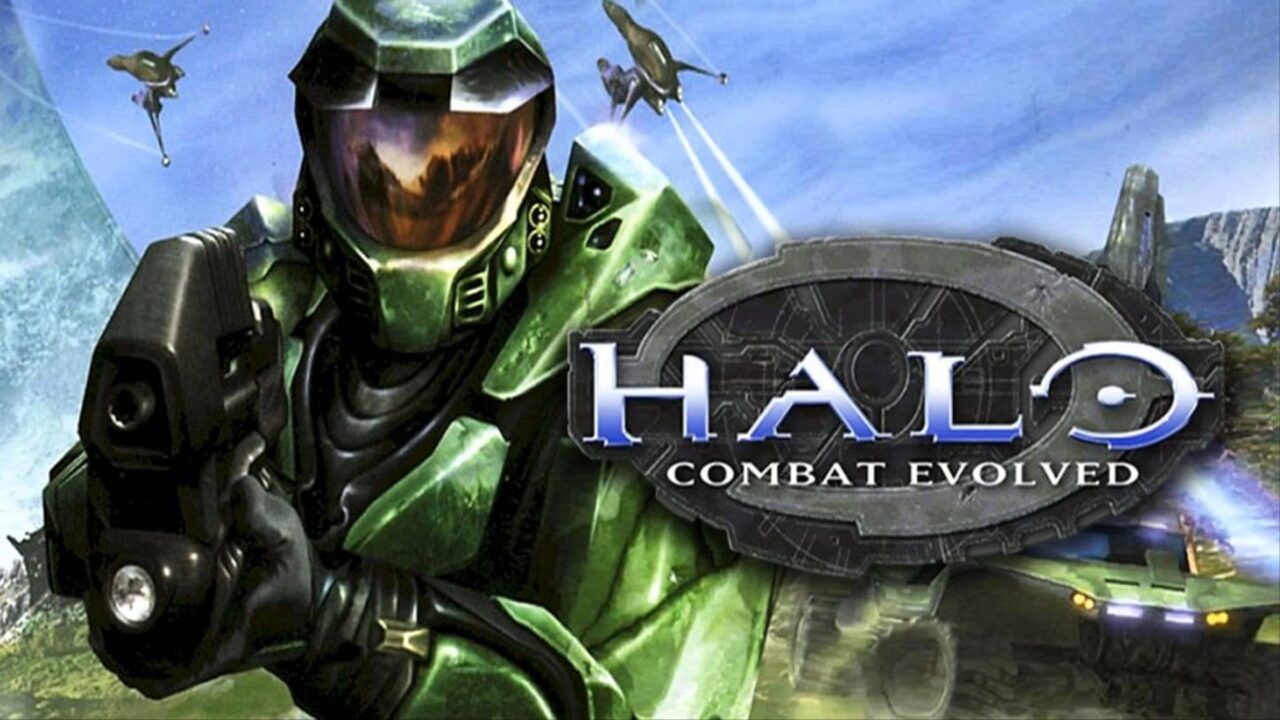Highlighted in my Halo: Reach review, I’m not a fan of first person shooters on console. I was, when I was younger and exclusively played on console, but sometime in my teens I sold my soul to the dark arts of PC gaming and never truly looked back. For years I didn’t even touch my Xbox 360, ignored the following generation with the Xbox One and PS4, but have for a few years found solace in recognising both platforms – computer and console – have their advantages. In fact, most of my gaming this year has been on the sofa in front of a 4k telly on the Xbox Series X, a console which appears closer than ever at replicating the brawn of a PC in an unbelievably sleek and squat form factor, utilising the power of the controller as the mode of play.
This is relevant, because ever since making the jump to PC gaming some years ago, playing first person shooters with a controller has been an idea so inconceivable it’s borderline risible. What motor skills I had back in the day to play shooters with a pad have long been lost, and playing games in recent memory like Bioshock, Prey and Left 4 Dead on the Series X has been a fierce fight with frustration and irritation, provoked by a dearth of accuracy, speed and fluidity.
When my partner offhandedly installed the mammoth 150GB Halo: The Master Chief Collection, I never actually intended to play any of it, nor did I expect her to remember she’d even downloaded it given the time it took to install. She remembered though, and we had a blast playing through Bungie’s swansong to a video game icon – myself in particular was shocked to find I never once got annoyed by playing a first person shooter with a controller. Truly a revelation.
Bungie’s technical wizardry in this regard has always been common knowledge. Back when Halo: Combat Evolved was initially released, it played strikingly different to other console shooters of the time, a special case of a generic subtitle actually ringing true for once. There are plenty of examples of shooters on consoles implementing the stick layout we still use today, although Alien Resurrection is perhaps known more in this area for its infamous Gamespot review rather than its functionality. Halo: Combat Evolved not only took the concept of moving with one stick and aiming with the other, but made it one which felt good to use, and coming from a staunch opposer to first person shooters on console, no other praise lands quite as strongly as this one.

Halo: The Master Chief Collection allows you to modify each game directly, from the quick switching of remastered graphics with a button press to the in depth tinkering of controls. I flicked between the two broad presets, classic and modern, and both felt wonderful. The modern scheme plainly played better, smoothing out diagonal aiming and implementing a preferable acceleration rate, but I was astounded by the usability of the classic preset, to the extent I played the entire campaign with it enabled out of principle. There’s underlying trickery beneath both schemes, ranging from the broad aim assist to the bullet magnetism, both of which give Halo a particular “stickiness” when it comes to locking onto enemies. Thematically it makes sense too. Series protagonist Master Chief’s title needs no explaining, a towering, prodigious warrior, leagues ahead of his allies and enemies in skill and fortitude. A game like Call of Duty perhaps wouldn’t suit this setup due to the “gritty” nature of the ludicrous wars the series explores, but in Halo, it’s perfectly suitable.
Set immediately after the events of Halo: Reach (which of course came out a decade later as a prequel), the human-controlled behemoth of a spaceship, the Pillar of Autumn, exists slip-space, followed keanly by a wave of covenant forces. In possession of Cortana, an indispensable AI capable of changing the tides of the war, the Autumn decides to crash land onto a peculiar foreign ring named the Halo. As Master Chief, we uncover Halo’s true purpose, exploring the exotic yet somewhat domestic landscape filled with foes and flora alike.
Even in its original form, Halo: Combat Evolved is a pretty game. Dated, but the melding of flashy futuristic technology with verdant nature is one I’m fond of. Shooters like Unreal and, in a much more wacky, gory form, Serious Sam do the same thing. It’s simple juxtaposition, and in Halo it’s evident Bungie were using the polar styles to flaunt their technical chops on the shiny new Xbox platform. As stated before, The Master Chief Collection version of the game lets you instantly switch from the original games graphics and audio to the assets found in 2011’s “Anniversary” re-release. Swapping between the two fairly persistently in my playthrough, I find it hard to pick which one is “better”. The original game tends to look rudimentary sometimes with its flat and plain textures, yet the remastered visuals swing in the opposite direction by appearing overly textured. It’s notable in the first section of the game inside the Pillar of Autumn, a top-of-the-like spacecraft should, in my opinion, look sleek and clean, but the remastered graphics looks too gritty and tinged by occasionally “off” lighting. In this regard, the original visuals preserve tone far better than the new editions through virtue of doing less with its textures. Covenant ships specifically tend to fall into the overly designed camp, with extra lights, buttons and gizmos added to make them feel more like an alien habitat. “Sterile” would be an apt description of the original art, part of that would have undoubtedly been down to limitations, but I ultimately preferred the aesthetic. Distant landscapes, particularly skylines suffused with enormous planets and stars, looks stellar with the updated visuals, and one area which inarguably benefitted from the touch up was character models. Aliens appear more aggressive and fleshy, while humans now look like, well, humans, at least to early 2010’s standards. At the end of the day, I think it’s a preference, and since the review mostly pertains to the original game itself, my summation of its visuals are one of aging beauty.

On the audio front, sweeping changes are made in the Anniversary remaster which, again, are of higher fidelity, but aren’t not necessarily better. I tend to prefer the original assets again, nostalgia perhaps playing a role here but the same conclusion is drawn in my mind where either works well. The remaster also modifies the soundtrack, although I can’t comment on it since I always had the classic OST enabled. And yeah, that soundtrack, eh? A staple of teenage boys in school toilets across the globe. Halo: Combat Evolved glistens in the unseen auditory light of composer Marty O’Donnell’s majestic composition, combining blood pumping rock music in firefights and sonorous choir singing for the mellow downtime. I truly believe Halo’s soundtrack alone is responsible for the series’ image. Where contemporary shooters doubled down on their bombastic, gritty tone with persistent hollywood tunes, Halo manages to inject a soothing soul into the blustering war of the gameplay. It’s more impressive the way it can shift from one tone to another so seamlessly, or even combining the two in the same track,matching the energy of a cutscene perfectly. To my chagrin, Bungie seems reluctant to let the soundtrack play, and deafening silence after a wonderful ballad can last upwards of half an hour as you trudge through a mission. The less obtrusive tunes could have worked lovely in moments of slower map traversal, hopping between objective to objective can sometimes take a bit of time, and some ambient music would have complimented it well.
That does tie into Halo’s biggest weakness in its level design, although it makes more sense to revel in its strengths beforehand. When I think of “Halo”, two things come to mind immediately in its favour: the controls and the enemies. More specifically, their behaviour, proving a real challenge on higher difficulties as they become smarter and beefier. I typically play games on normal difficulty. Games do tend to be developed around them anyway, yet with Halo, I wanted a bit more challenge. I switched to Heroic after a couple of levels, and I was impressed by how much more effective the enemy AI becomes. Evading becomes a common maneuver for your alien foes, chucking plenty of grenades your way as they do so too. Jackals, weak, glass cannon type enemies, now utilise the plasma pistol to full effect, charging the gun and blasting you to wipe away your shields in one hit. Elites can withstand the full brunt of an assault rifle mag, forcing you to pop shots at them intermittently, in addition to planning attacks ahead of time. It doesn’t take away from the power trip that is at Halo’s core. The Master Chief is still a walking, rarely talking tank on legs, and most of the game relies on your skill and strategy alone as your comrades either don’t exist or exist as a husk of your aptitude. The aforementioned controls slip in nicely here, as I never once felt inhibited by the constraints of a controller as opposed to a mouse and keyboard. The stickiness to Halo’s aiming makes quick firefights both a joy and a breeze to engage with. And, before we touch on the level design more specifically, I loved the manner in which the enemy AI loses track of the player. While the levels are troubled, there exists means of weaving out of their line of sight, popping up behind them and blasting the back of their heads without them knowing, a palpable power trip.
The level design. Visually intriguing most of the time, but frequently monotonous, bland, confusingly open ended and fundamentally lazy. It’s a shame that a game with such life embedded at its core is marred by such dullness in its levels. Starting with “The Library” is taking the game at its worst, as it is nothing more than a repeating loop of grey corridors which spans over an hour. I can’t stress enough how boring this late game level is, frustrating too, on two fronts. On Heroic, the game bombards you with enemies at a frightening pace and suddenness, almost literally bleeding from the barren walls from all directions. On the other front, it’s one of the game’s first introductions to the enemy class, The Flood, a now iconic species in the Halo universe which ended up sending me into a torpor with this level alone. The enemies themselves are fine, interesting on a thematic level; zombie-like creatures with gruesome gashes and growths all over their body, still very clearly emitting signs of humanity from the dead corpses they inhabit. But because The Library is so unrelentingly dull, I ended up hating them. As I indicated, The Library is the worst of the bunch by far, but Halo’s achilles heel is definitely its levels. Early game levels have you explore awe-inspiring vistas, verdant plains spliced with futuristic tech which looks beautiful, but does nothing to guide the player in the right direction or provide the best strategic gameplay possible. Again, the game reuses areas liberally, and the whole game ends up feeling like three or four areas mashed together, when really the game has over three times that amount in chapters.
There is a story being told in Halo, and it’s universe is perhaps more interesting than the traditional storytelling which often muddies itself in sci-fi verbiage to the point of convolution. Some games are like this, notably, from the same era, Kingdoms of Amalur: Reckoning, an open world action RPG with lore crafted by the legendary R. A. Salvatore which never actually does a good job conveying itself. Halo is filled with concepts which sound interesting, but due to the lack of direction – perhaps worsened by the levels blending together – I got lost in the narrative several times, sometimes saved by prior knowledge of the events of Halo: Reach, which gamers of the time wouldn’t have had. The war between the covenant and humanity, the flood’s existence and imminent threat, along with the indication of a greater race and purpose for humanity as a whole gets touched on throughout, but is done so with full fist pinches of lingo the player doesn’t understand yet. Having played Halo 2 and Halo 3 yonks ago, I can’t say whether the narrative comes together better in later games, but it certainly lays some fruitful ground for the next entries, if at the cost of a so-so experience in the first installment.
Halo as a franchise is one which becomes more attractive to me the more time goes on. The Series X is the first console in a long time which I feel could replace my PC if the situation arose, partly due to its stout power, but also because the backwards compatibility situation is sublime and only improving. Despite the “remaster” nature to The Master Chief Collection, playing Halo: Combat Evolved in its original form is just as effective as a modern touch up. As I spend more time on the sofa with a controller in hand, shooters become less of a viable candidate for my time as, to beat a dead horse, I don’t like how they play with a pad. Halo is different, it plays joyously with a controller, which only touches the surface with regards to everything else the game does well, from the ethereal yet intriguing universe to the immense, grandiose presentation to the frantic yet tactical combat. Halo 2 will follow shortly, I’m sure, and it has a rather formidable predecessor to topple.

